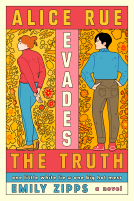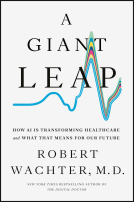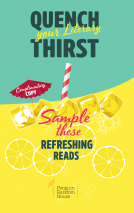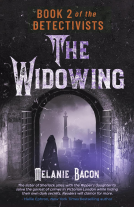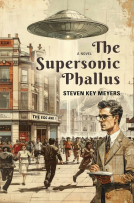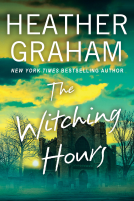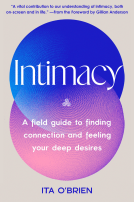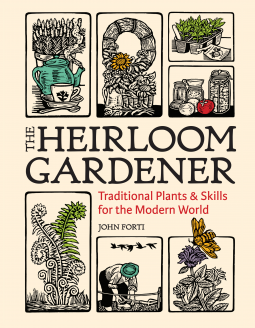
The Heirloom Gardener
Traditional Plants and Skills for the Modern World
by John Forti
This title was previously available on NetGalley and is now archived.
Send NetGalley books directly to your Kindle or Kindle app
1
To read on a Kindle or Kindle app, please add kindle@netgalley.com as an approved email address to receive files in your Amazon account. Click here for step-by-step instructions.
2
Also find your Kindle email address within your Amazon account, and enter it here.
Pub Date Jun 22 2021 | Archive Date Nov 04 2025
Talking about this book? Use #TheHeirloomGardener #NetGalley. More hashtag tips!
Description
“Part essay collection, part gardening guide, The Heirloom Gardener encourages readers to embrace heirloom seeds and traditions, serving as a well-needed reminder to slow down and reconnect with nature.” —Modern Farmer
Modern life is a cornucopia of technological wonders. But is something precious being lost? A tangible bond with our natural world—the deep satisfaction of connecting to the earth that was enjoyed by previous generations?
In The Heirloom Gardener, John Forti celebrates gardening as a craft and shares the lore and traditional practices that link us with our environment and with each other. Charmingly illustrated and brimming with wisdom, this guide will inspire you to slow down, recharge, and reconnect.
Available Editions
| EDITION | Ebook |
| ISBN | 9781643260891 |
| PRICE | $13.99 (USD) |
| PAGES | 264 |
Available on NetGalley
Average rating from 32 members
Featured Reviews
John Forti’s love for the environment and encouraging readers to take more notice of the garden and countryside around them is endearing. This is in many ways an introductory book for those dipping their toes in to a wider awareness of heirloom / heritage plants and skills- often everyday items taken for granted. The introduction is heartfelt and a gentle call to arms against the world of consumerism. The book is presented as an A-Z selection of ; environmental / eco terminology , heirloom skills , plants and flowers. The illustrations are presented in the style of woodblock / pen and ink designs which add to the feeling of country crafts. Sections provide a good basic introduction to the various selected items with useful advice and information. It would have been good to have a few recipes in detail for the uninitiated. Ultimately, this book is a lovely taster to direct individuals to more closely consider the natural world around them and hopefully encourage them to undertake or research skills through further avenues.
I am an avid gardener and love using heirloom plants interspersed throughout my garden. With this longtime enthusiasm I excitedly perused The Heirloom Gardener by John Fort. This was not my traditionally styled garden guide. It was done in the style of pen and ink sketches, as a mode to share advice and tips for all gardeners that love heirloom gardening. It gave useful tips regarding plant placement and spacing that will be easily implemented .
Not what I thought it was. I supposed I should have looked closer because I assumed this would have information on how to be an heirloom gardener. Instead its a series of short essays on heirloom plants, history, and actions related to heirloom gardening. Its a fun read and I did learn a lot, even though it doesn't help me with my tomatoes or apples.
While interesting, this wasn't what I thought it was going to be. I thought it would have more information on different varieties of heirloom plants, maybe where to buy them, how to take care of, and preserve them for future generations. However, this book is an A-Z style guide of different plants, gardening and horticultural practices, and traditional goods and skills. Each section, about their individual topic, contains enough information to fire up someone's interest in the topic, but personally leaves me wanting more. I loved the woodblock illustrations, though. It really gave the whole book a more traditional vibe.
Overall, I would recommend this more as a primer for people just starting to dip their toes into the world of heirloom gardening and traditional crafts. It gives some valuable information about what types of herbs, flowers, and trees could be found in an heirloom garden, but also some ideas on how to arrange and upkeep it in a traditional way. There is a lot of information in this book that I can see being lost for future generations without people writing books such as this one. So, even if it isn't quite what I thought it was, it contains a lot of valuable information.
Thank you to Timber Press and Netgalley for providing me with an eARC of this book. However, all thoughts and opinions in this review are my own.
 Reviewer 677700
Reviewer 677700
Not exactly what I thought it was going to be, but I was drawn to this pub due to a good history with the publisher. I enjoy the cover, it’s attractive and modern. The subject matter conveyed by the title is helpful, but the content deviated from what I believed it would be. At the same time, the book as it is is good! A lot of info for gardening beginners or enthusiasts.
I liked this book. It made a fair case for the kind of knowledge and skills the regular person seems to have "lost," and our disconnect with nature. I think the themes and knowledge this book possesses are important to remember and share, not only in the U.S. where The Heirloom Gardener keeps its focus, but all across the world. There is for sure some information I will make use of when I tend to my own garden this year and in the future.
However, I wished some chapters were longer and gave more practical information than historical or personal. Then I feel like it would be easier to apply this knowledge to a regular garden\household.
Layout-wise, I loved the drawings. They added quite an atmosphere to the book.
 Allison R, Librarian
Allison R, Librarian
This was a quick enjoyable read, but I'm not quite sure who the audience is that Forti is writing to. I feel like he's really preaching to the choir, and I'm not sure if the people who he wants to reach are necessarily picking up this book. It's not really a reference guide and it's not really a coffee table book and it's not really a memoir but somewhere in between all three. Unfortunately I didn't think it really served the purpose of any one of those genres fully. It was still a fun read since it's in my area of interest. I would have liked some supplemental photos along with the illustrations.
A perfect book to read as the days are getting longer and the greenery is starting to sprout.
A lovely collection of history and useful information about gardening, foraging and being outdoors.
I can't pick a favorite part, but there were so many chapters and sections that reminded me of being a child roaming the fields and bush, picking flowers and plants to bring home. I learned so much new information and expanded knowledge of some plants I was familiar with.
I loved the images in the book. It would be a delightful coffee table book and a great gift for any gardener. I'm deffinatly getting a copy for my Grandpa.
Such a lovely, relaxing and thought-provoking book about where we are and how we got here as stewards of the soil and plants as gardeners and foragers. But it's far more as the author examines ethnobotany and sentimentality, what it means to be an artist and crafter, how to enjoy a lifestyle which is mindful of choosing the foods we eat and preserving gardening techniques and passion. The author is a horticulturalist and ethnobotanist and shares his wealth of knowledge, experience and remarkable insight in this beautiful book which also includes nostalgic illustrations. He defines heirlooms and gives wonderful examples including gardening, of course. Each short chapter in alphabetical order is about a craftmanship, skills, vegetables and fruits, community, growth and preserving.
As the author says, it is time to capture these ideas and share them or they will be lost entirely. As a master gardener, forager and amateur horticulturalist, I agree wholeheartedly. We need not live as though we are in a bygone era but we can certainly adopt methods which make so much sense. I wish we would slow down and engage with the soil, nature and weather. In this book, the author includes my favourite quote by Louis Nizer, "A man who work with his hands is a laborer. A man who works with his hands and his head is a craftsman; but a man who works with his hands and his head and his heart is an artist."
Not only do connecting and creating with your hands feel great physically and mentally, it is important for eating better, learning about what grows best in our area, maintaining tradition and teaching. It is healthy for our land. Growing what we eat can give such joy. So does preserving it. Reaching for homemade pickles, jams and dehydrated mushrooms in our -40s C winters gives me pride and joy. I also live part time in the Mediterranean where on one walk I can pick wild herbs, many fruits, mushrooms and nuts (my favourite is chestnut which is also described in this book)...nothing gives me greater satisfaction. As yet, no GMOs, either.
Amongst the topics include botanizing and herbaria...yes! Love the idea of kids starting herbaria and going on nature walks. The author says many kids now can only identify ten flora and fauna. I saw a child recently who pointed at a goose and did not know what it was. Heartbreaking. Another topic is cordials. My favourite is elderflower. He talks about fiddleheads, foraging, indigenous plants, quince, raised beds (my husband built several for me which included a seating area all around for comfort), rosemary, Victory Gardens, Xeriscaping (very important in areas of severe drought such as mine), wreaths and yarrow.
This book really resonates with me, right up my alley as a gardener, crafter, reader and cook. You need not be a gardener to enjoy it...all you need is curiosity and a corner to curl up in.
My sincere thank you to Timber Press and NetGalley for the privilege of reading this fabulous book.
 Reviewer 700590
Reviewer 700590
This is an interesting book on the historical growing practices and uses of plants, including distilling oils, tinctures, victory gardens, benefits and attributes of various plants including edible, flowering and medicinal properties, as well as a wide range of other interesting botanical and gardening points of interest. This is not a gardening book, but it is a book that gardeners will enjoy and learn additional ways to enhance and expand the benefits of their gardening endeavors.
 Shelley Q, Librarian
Shelley Q, Librarian
John Forti has designed heirloom gardens all over New England from Strawberry Bank in Portsmouth, N.H. to Plymouth Plantation in S.E. Massachusetts . Like the slow food movement for which he was a consultant this beautifully designed compendium of selected heirlooms presents a leisurely observation of plants and practices reflecting centuries of important cultivars. Forti lovingly recounts the history and use of angelica and rhubarb and describes the value of elderberries and Dent de Lion , the ubiquitous jagged tooth Dandelion ignored by many but sought by others for its medicinal properties. It would be a mistake to consider this an essential book on heirloom plants. Rather, with its beautiful woodcuts by noted Vermont artist Mary Azarian and charming individual essays this is a book to give as a gift or to keep by the bedside to pick up and savor just like fascinating heirlooms it describes.
The author is former curator of historic landscapes at Strawberry Banke Museum in Portsmouth, N.H. where he restored backyard gardens. He was also director of horticulture and education for the Massachusetts Historical Society. His book is a collection of essays that cover aspects of heirloom gardening. Many chapters focus on specific plants and foods and he discusses the various merits of the plants and ways to harvest and use them in recipes. Sustainability and a return to old-fashioned methods are the focus. A pleasant and thought-provoking read.
The Heirloom Gardener is a multi-purpose gardening and philosophy guide by John Forti. Due out 22nd June 2021 from Workman Publishing on their Timber Press imprint, it's 264 pages and will be available in hardcover and ebook formats.
The author has collected culture tips, some traditional skills, and philosophy in an alphabetical primer format. The chapters are arranged from angelica to zucchini and visit such skills as foraging (safely), grafting, and foraging and using kelp to help increase biomass and trace minerals in soil along the way.
There are no photographs nor step-by-step tutorials. The illustrations (see cover) are woodcut primitive style and really suit the "old farmer's almanac" traditional vibe. This one fits in my library alongside the John Seymour books and more philosophy minded conservation books such as Muir and Carson.
I would recommend this to smallholders, gardeners interested in more gentle, conservation minded, and traditional methods of culture, gardening groups, allotments and community gardens, schools, urban gardens, and similar.
Four stars.
Disclosure: I received an ARC at no cost from the author/publisher for review purposes.
 Markey O, Educator
Markey O, Educator
This books isn’t what I expected when I received a free review copy. It’s more a series of essays and memories than a guide to gardening and related skills. This is not, however, a bad thing. John Forti presents a glimpse into a world few get to discover in our modern society, a slower-paced life at one with the land. Not only that, he presents an invitation, giving enough detail to allow those that want to join in on this life to start.
 Michael W, Reviewer
Michael W, Reviewer
The author give a good perspective on how we have lost what our ancestors gave us in terms if gardening and many pother subjects. He goes into heirloom gardening both plants and vegetables. He also covers how to fertilize your garden without chemicals. There are very good tips and ideas plus some of the history of plants and herbs. I enjoyed this book and recommend it for gardeners and those who are interested in plants and history.
 Librarian 431790
Librarian 431790
It's a fascinating read short essays about what it is being a heirloom gardener. Plants, concepts, skills: there's plenty of fascinating topics in this book and I found it entertaining and engrossing.
I loved the pictures and think this would be great in paper.
Highly recommended.
Many thanks to the publisher and Netgalley for this ARC, all opinions are mine
 Katherine L, Librarian
Katherine L, Librarian
The Heirloom Gardener is a very charming book of essays. I enjoyed the illustrations. Keep in mind this is not so much a guide as a book of entertaining, informative essays.
 Librarian 684932
Librarian 684932
This is an attractive and informative book that would make an excellent gift for gardeners, homesteaders, hobby farmers, witches, or anyone interested in getting "back to basics." It is a great coffee table or display book. There is really no narrative here and not something most people would want to read cover-to-cover in one go. I don't know that it is the right fit for libraries who are short on space and are moving away from reference materials, but this would be a nice modernized source for libraries with large collections.
 Anais S, Reviewer
Anais S, Reviewer
A little book to help us reconnect with nature and our planet. We have lived in an industrialized area for so long that most of us can't remember how to interact with nature and live in symbiosis with it.
The author takes us through the art of gardening, cultivating, and living closer to mother earth. Through these topics addressed alphabetically, he shows us how to treat and use plants, cultivate the earth and get the most out of nature. How to reconnect. Nature has so many treasures and is so diverse that we barely need anything that the industrialized world makes us think we do. Our bodies and minds have been suffering for too long from this lack of contact with nature. It is time to relearn, step by step, how we can nurture the earth and ourselves.
This book is a great encyclopedia of nature, and maybe it could be a staple to have for everyone wishing to expand their horizons and start gardening and taking care of their heirloom.
It is nicely written, with the heart, and kind of engaged too.
Special thanks to Netgalley and Timber Press for sharing an audio copy of this book with me in exchange for an honest review.
 Sami O, Book Trade Professional
Sami O, Book Trade Professional
The Heirloom Gardener is part encyclopedia, part essay collection—a celebration of heirloom plants and the cultural, ecological, and historical roles they play. The book weaves together detailed entries on fruits, vegetables, and herbs with reflective passages about our relationship to gardening and the natural world.
I found the encyclopedic sections especially engaging, offering a rich and accessible snapshot of heirloom varieties and their significance. The essay-style asides were less compelling, as they often felt like reminders of ideas most readers drawn to this book likely already hold, giving them a slightly “preaching to the choir” quality.
Still, as a whole, the book succeeds as both a reference and a reflection. It captures not only the beauty and diversity of heirloom plants but also where we stand as a culture at this moment in time, considering sustainability, heritage, and our connections to the past.
 Reviewer 1903196
Reviewer 1903196
The author charmingly shares anecdotes about gardening and explores the history of gardening in America, weaving together tales of the past and the present to explain how the disconnect between people and land came to be. The author makes a strong case for the continued understanding of gardening and land, showing how plants are used in tonics, skincare, food, cleaning and much more with each chapter acting as a building block for the next, and I found myself taking notes of activities that I fully intend to do, such as making a herbarium, trying out new recipes with local ingredients and writing down quotes and definitions of words that I hadn't encountered before in my commonplace journal. The illustrations were absolutely gorgeous and really brought the words of John Forti to life.
However, it feels like the personal anecdotes and activities were more exhaustive than some of the explicit commentary. I was surprised to read the phrases in chapters regarding topics like native plants, which felt inappropriate. Whilst I can afford leniency in that this book is not an academic text in the prescriptive traditional sense, I think that a more robust use of sociopolitical and philosophical theory could have been used to emphasise the interesting points that this book made, and I believe based on the variety of complex topics that I learnt reading this book, that more of this sociopolitical and philosophical context would have further enriched what was otherwise an enjoyable read.
This book is an interesting read for someone curious about the prevailing attitudes regarding horticulture and gardening in the USA, and there is plenty to take away in terms of activities like foraging, cooking, herbaria, wattling, etc, with interesting and vivid anecdotes that will bring a smile to your face. If you're hoping for philosophical commentary that has a lot of sociopolitical analysis or something of a gardening encyclopedia, this isn't the right book for that.
 Molly F, Reviewer
Molly F, Reviewer
This collection is a great starting point into the world of gardening! Both inspiring and grounding, Forti reminds us that plants serve many purposes and encourages readers to dig deep, into the soil and generations of growth and wisdom. I also enjoyed the art style, very fitting to the book.
While I would have loved to see more inclusion of Indigenous voices and culture, I appreciated Forti’s emphasis on native plants and his well-rounded approach to gardening.
The Heirloom Gardener
This book presents a compelling and well-researched argument for the importance of heirloom gardening. As an urban gardener who tries to grow heirloom produce, I have a pre-existing bias in favor of the subject matter. The book's effectiveness lies in its holistic approach, which successfully integrates the social, environmental, ethical, and cultural significance of this practice.
Key Strengths and Observations
A particular highlight is the exploration of traditional uses for the plants, revealing the unexpected edibility of various parts of common crops beyond the primary harvest. This information was both fascinating and educational.
The primary limitations include the book's strong East Coast focus, which may make the historical context less accessible to readers in other regions like California. Structurally, the book's pacing is uneven because it attempts to be both a call-to-action and a reference guide; a clearer focus would improve its effectiveness
I really enjoyed the illustrations before each section as well.
(Thank you to NetGalley for the copy of this book)
 Teresa H, Reviewer
Teresa H, Reviewer
Thanks to #NetGalley and John Forti for the advance reading copy of The Heirloom Gardner.
I’ve been gardening for many decades and love to read gardening books in the offseason. I especially love to look at beautiful pictures which is something this book definitely lacks. The woodblock prints are lovely, but I really missed colorful photos so easily available in this digital age. Other than that, this book is packed with a plethora of information!

